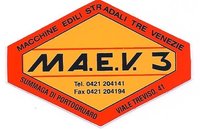For a significant investment, one can achieve a high hashing rate. To maintain seamless blockchain operations, the Bitcoin network endeavors to produce a block approximately every 10 minutes. Periodic adjustments are made to mining difficulty based on the community’s size. ASIC miners, custom-built for cryptocurrency mining, offer superior yield compared to GPUs but come at a steeper price and face quicker obsolescence due to rising mining challenges. It is also possible for users to choose which cryptocurrencies they earn via these features.
The first miner to find a valid solution can broadcast their transaction block to the blockchain to receive the block reward. The miner then attempts to convert this candidate block into a valid, confirmed block. To do this, the miner must solve a complex mathematical problem that requires a lot of computing resources. However, for each successfully mined block, the miner receives a block reward consisting of newly created cryptocurrencies plus transaction fees. Crypto mining is a process blockchain networks, like Bitcoin and other cryptocurrencies, use to finalize transactions.
Types of Crypto Faucet
The halvening also tends to correspond to the value of Bitcoin because as it becomes more costly to add coins to the circulation, supply vs. demand will go down. Miners get incentives to validate transactions and create blocks, while users making transactions rely on the miners for their transactions to be confirmed. To publish the block there needs to be confirmation through one or multiple miners in a mining pool.
FreeBitco.in also offers a referral program where users can earn 50% of the earnings of those they referred, along with a free lottery ticket. These battles are designed to be entertaining and engaging, using AI rendered scenes and fights. The fights are selected at random by AI and all wagers are processed via smart contracts on the blockchain, meaning that funds are automatically distributed to the winners.
ASIC
The competition between these blocks continues until the next block is mined on top of one of the competing blocks. When a new block is mined, whichever block came before it is considered the winner. The block that is then abandoned is called an orphan block or a stale block, which causes all the miners who picked that block to switch back to mining the chain of the winning block. A block header acts as an identifier for each individual block, meaning each block has a unique hash. When creating a new block, miners combine the hash of the previous block with the root hash of their candidate block to generate a new block hash.
To understand crypto mining, we first must understand blockchains. Cryptocurrency blockchains work by maintaining a decentralised, public ledger of chain-linked blocks (hence the name ‘blockchain’). These blocks include validated and vetted transactions that have been added to the blockchain and cryptographically signed to avoid tampering, fraud, or unauthorised transactions. Each transaction added must be validated in one of the several ways to ensure the integrity of the entire blockchain.
Does Crypto Mining Damage Your GPU/Computer?
Since launching, $SMOG has already risen by 4,700%, and looks set to extend this as its airdrop approaches. This way, tiny drops of the best cryptocurrencies could eventually add up to a meaningful amount. Ultimately, the higher you are in the rankings, the more tokens you will be rewarded when the airdrop begins.
NerdWallet, Inc. is an independent publisher and comparison service, not an investment advisor. Its articles, interactive tools and other content are provided to you for free, as self-help https://www.tokenexus.com/how-does-crypto-mining-work/ tools and for informational purposes only. NerdWallet does not and cannot guarantee the accuracy or applicability of any information in regard to your individual circumstances.


















Leave a reply
You must be logged in to post a comment.